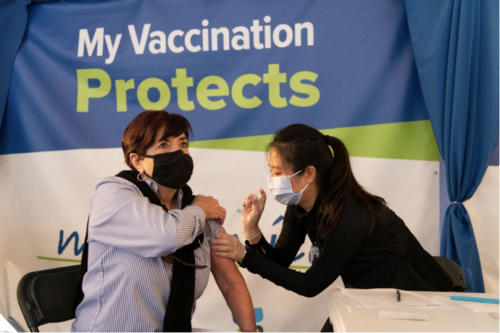Cervical cancer is common and relevant today. About 12,000 women in the U.S. are diagnosed with cervical cancer each year. If caught early, cervical cancer is highly treatable. This makes it especially important to stay vigilant and know the signs.
Cancer of the cervix usually occurs in women between the ages of 35 to 44, but more than 15 percent of cases are found in women older than 65. Learning how this cancer can be prevented, diagnosed and treated can help you protect yourself, your sisters, friends and daughters.
What causes cervical cancer?
HPV (human papillomavirus) causes nearly 100 percent of cervical cancer cases and is the most common sexually transmitted infection. The Centers for Disease Control and Prevention (CDC) estimates that most men and women will get at least one type of HPV at some point in their lives.
Thankfully, only a few of the more than 200 kinds of HPV actually cause cancer. In most instances, the infections disappear on their own within two years.
However, women with HPV infections that don’t go away face a high risk of developing cancer of the cervix.
Are there factors that can increase my risk?
The following risk factors increase your odds of developing cervical cancer:
- Getting an HPV infection
- Having a family history of cervical cancer
- Having a personal history of chlamydia
- Smoking
- Being overweight
- Taking birth control pills for a long time
- Having a mother who took the hormonal drug diethylstilbestrol (DES) while pregnant
What are the symptoms of cervical cancer?
Women with early cervical cancers and precancers usually don’t have symptoms. Once the cancer becomes invasive and grows into nearby tissue, women may experience abnormal vaginal bleeding, unusual discharge from the vagina and pain during sex.
How is it detected and treated?
With a Pap test, your health care provider can inspect your cervix for abnormal cell changes that may lead to cervical cancer. He or she may also conduct an HPV test to check if you’re infected with the virus (this test can be done at the same time as the Pap test). Abnormal results from either screening may mean you need more testing, such as a biopsy to check if precancer or cancer is actually present.
Caught early, in its precancerous stage, the disease can often be treated successfully before the cells become cancerous.
Several factors help determine how best to treat this disease, including the size of the tumor, whether the cancer has spread, and if you’d like to become pregnant someday. Surgery, chemotherapy and radiation therapy — alone or in combination — are used to treat cervical cancer.
What can I do to prevent cervical cancer?
Talk to your doctor to get his or her recommendations based on your age, family history and other risk factors. Ask whether the HPV vaccine is right for you.
Also, receive regular cervical cancer screenings from your gynecologist. The U.S. Preventive Services Task Force recommends women ages 21 to 29 get a Pap test once every three years. Women age 30 to 65 can choose to have a Pap test every three years, an HPV test once every five years, or a Pap test and an HPV test once every five years.
By being proactive about prevention, you can successfully decrease your odds of developing cervical cancer or receive treatment in its earliest stages. To find a women’s health specialist near you, use our helpful online physician finder.
This article is provided by AdventHealth.






